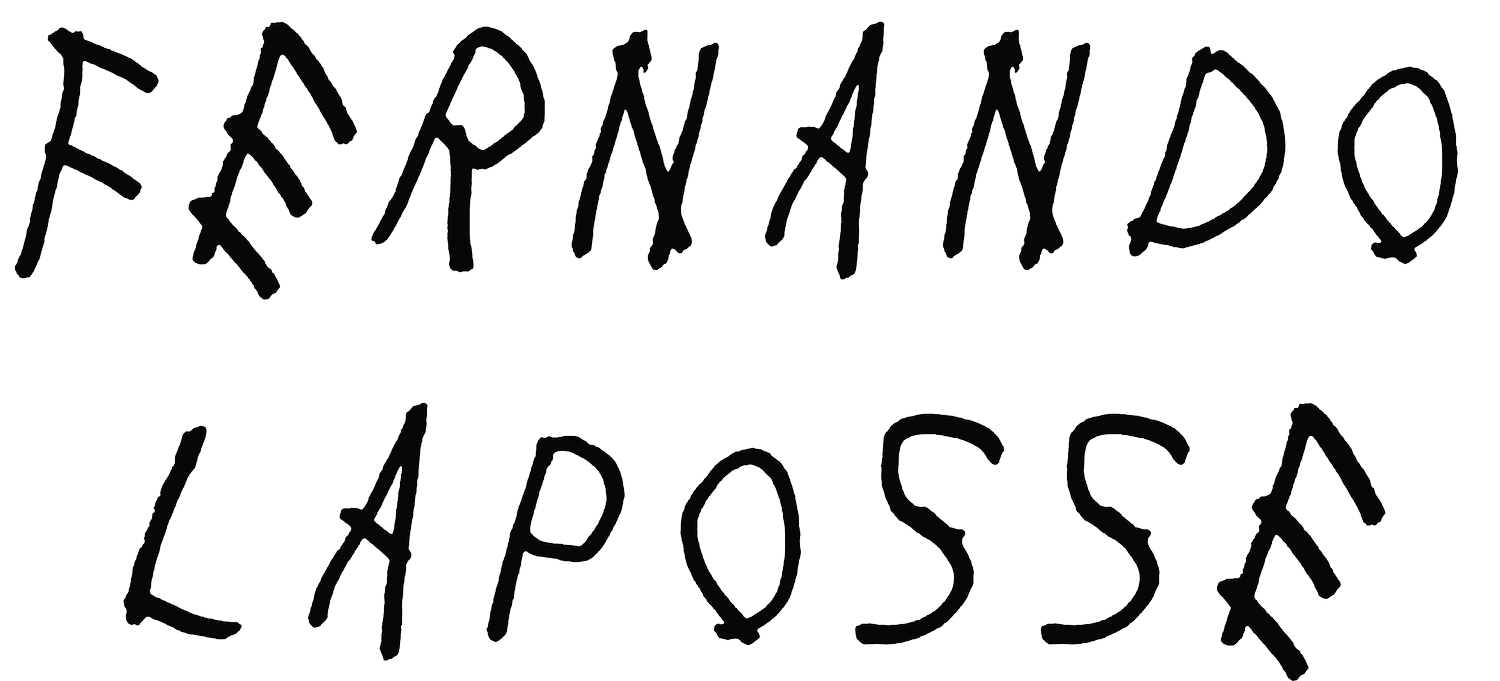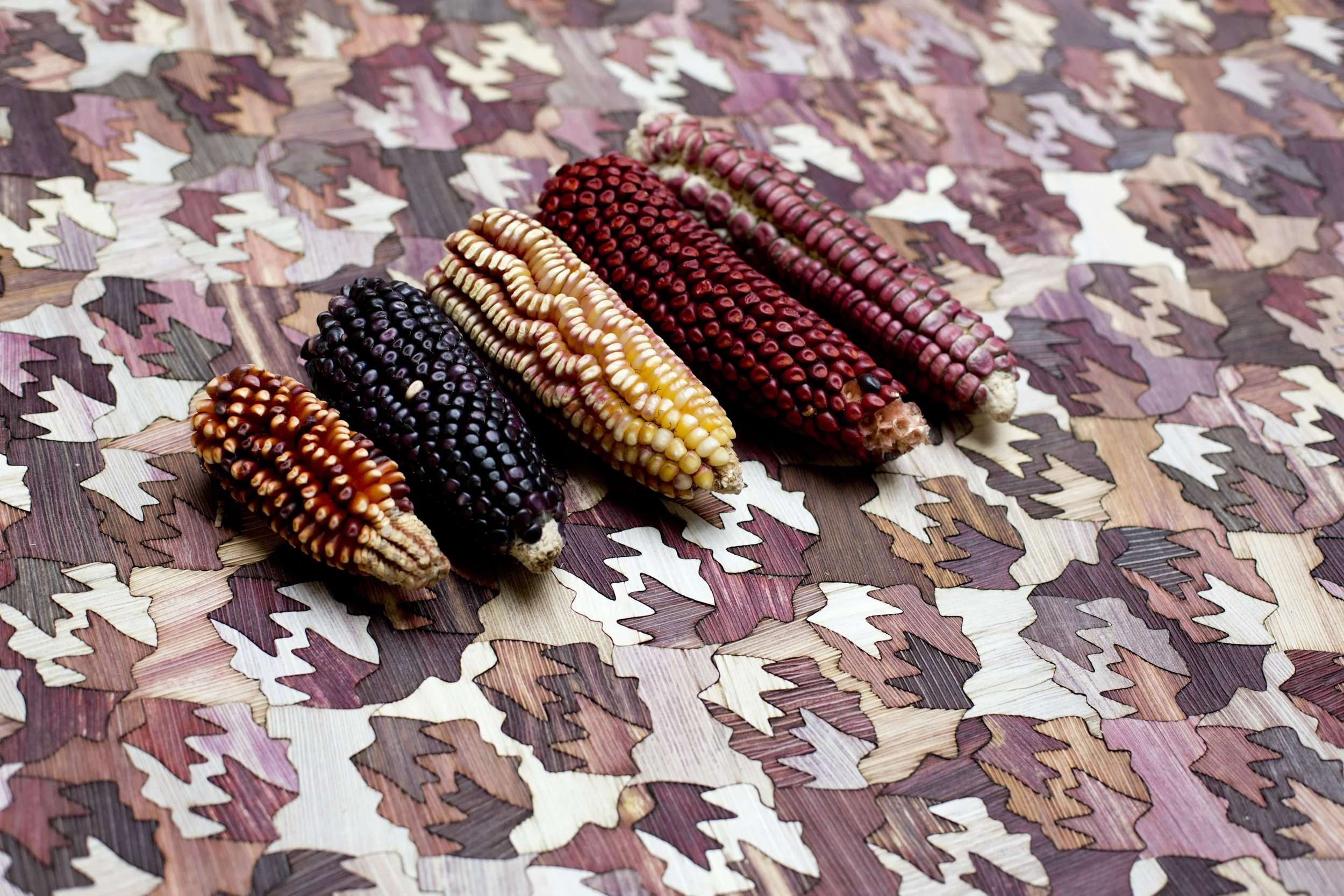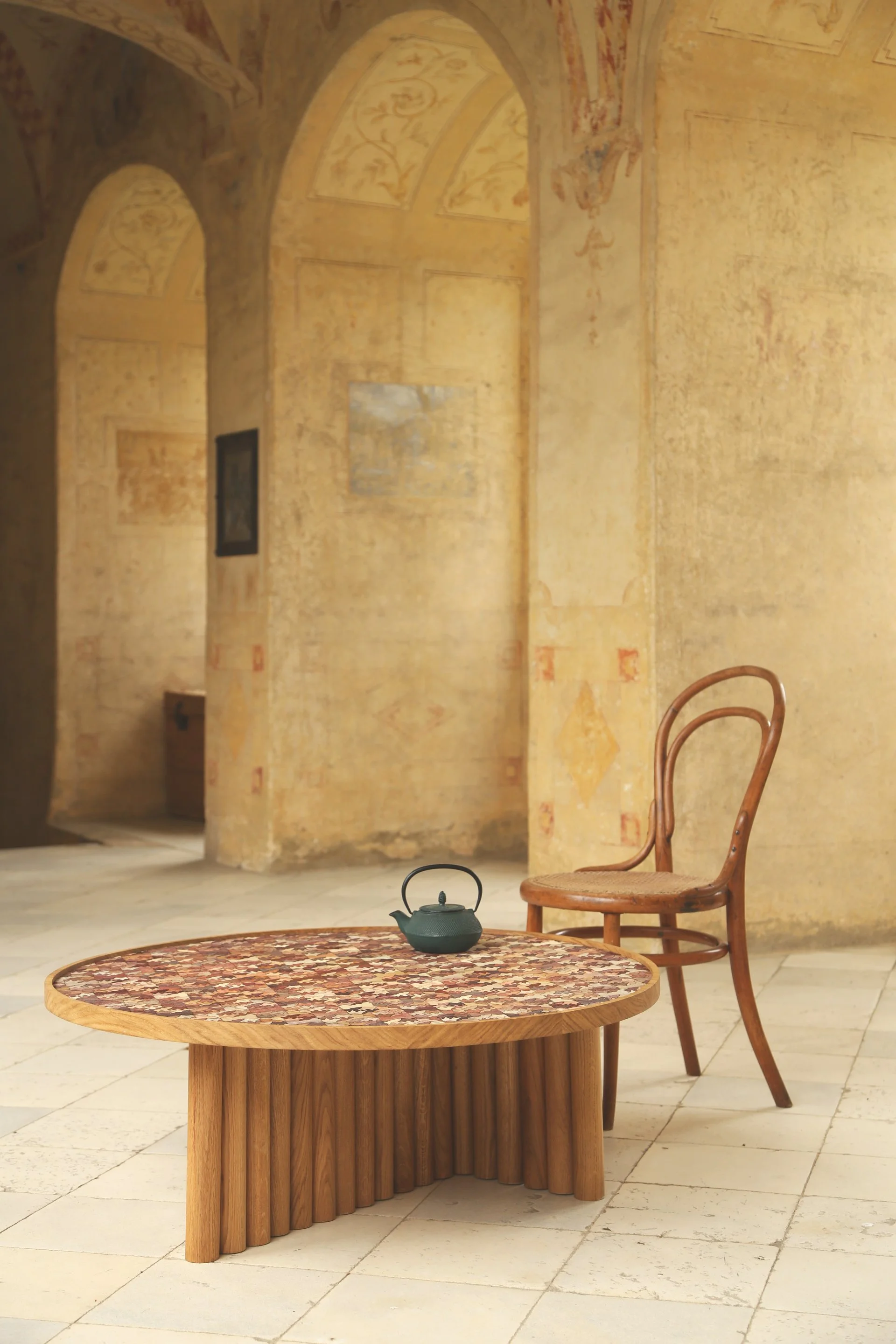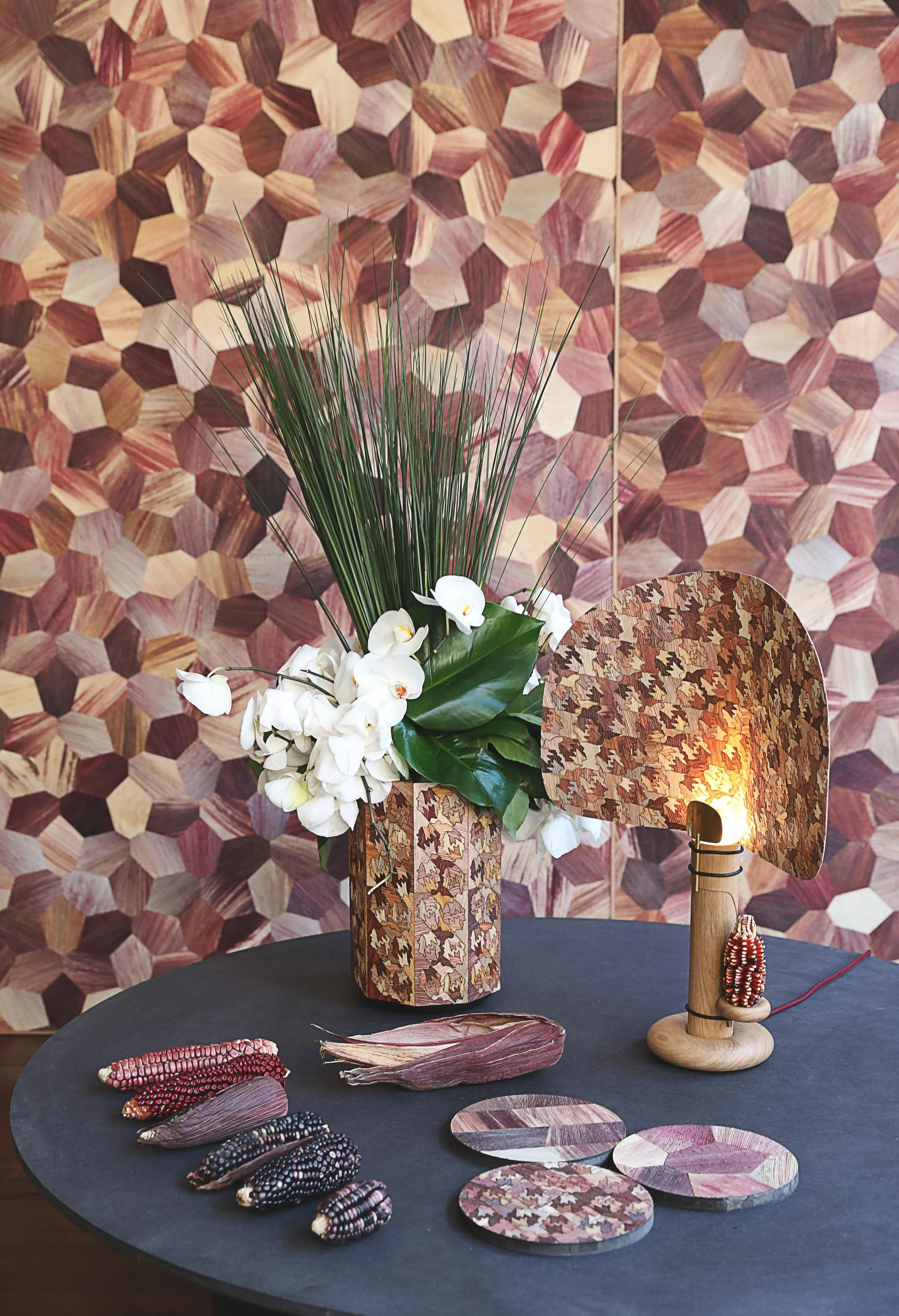CORN VENEER (TOTOMOXTLE)
Native Corn Husk Marquetry
Totomoxtle is a new material that harnesses the brilliant spectrum of colour seen in the husks of heirloom corn. Varying from deep purples, to soft creams, Totomoxtle showcases the natural colour range of species of native corn that exist in Mexico. Each husk is carefully cut and peeled off the cob, ironed flat and glued onto a paper pulp or textile backing. At this point the material is ready to be cut by hand or laser into small pieces that are reassembled to make marquetry for furniture or interior surfaces.
But this project goes far beyond simply aesthetics. Totomoxtle focuses on regenerating traditional agricultural practices in Mexico, providing income for impoverished farmers and conserving biodiversity for future food security.
“It might come as a surprise to many but corn is now the most planted grain in the world and despite this, only a fraction of it is produced for direct human consumption.”
— Fernando Laposse
The bulk of the global maize production is planted to be transformed into secondary products which range from sweeteners for processed foods to bio-plastics, fuel, and animal feed.
Consequently, maize seed development has focused on efficiency and standardization rather than nutritional quality. This has meant that high yielding industrial hybrid seeds that are complemented with heavy doses of fertilisers and herbicides have become the norm.
Unfortunately, this has resulted in a sharp decline number of native varieties of Mexican corn which struggle to find their place in a market that favours quantity over quality.
Watch the entire video here
But this had disastrous consequences as it broke the delicate ecological balance that had allowed Mixtecs to plant corn in the arid mountains for thousands of years. The introduction of herbicides forced them to abandon their “milpa” policulture system where the land is kept fertile by simultaneously planting corn black beans and pumpkins as only hybrid corn is capable of resisting such toxins.
At the moment the only hope for saving the heirloom species of maize lies with the indigenous people. They continue to plant them because as they are essential for their traditional cuisine and religious ceremonies. After all they are direct descendants of the ancient mesoamericans that domesticated maize and in a process of selective breeding that took thousands of years to create the diversity of species that we have in Mexico.
Tototmoxtle is a project that operates in partnership with the community of Tonahuixtla, a small village of Mixtec farmers and herders in a remote area of the state of Puebla in south west Mexico. Tonahuixtla, like many indigenous communities has seen their traditional lifestyle threaten by changes in the global economy global which are beyond their control.
A tipping point was the 1994 North American Free Trade Agreement (N.A.F.T.A) where small farmers in Mexico were put in direct competition with industrial corn plantations in the American mid-west. This meant that the only way to compete in this new market was to adopt modern techniques which use herbicides, fertilisers, and hybrid seeds and this was encouraged by the Mexican government through rural welfare programs.
Sadly, the degradation caused by the arrival of industrial agriculture to the area and the lack of employment opportunities have caused a mass migration, the erosion of the land and the loss of native seeds.
Fernando Laposse has been working with a group of families from there since 2016. Together, they are trying to reverse the situation by returning to the traditional agricultural methods that have been used locally for centuries.
Tototmoxtle also works in collaboration with CIMMYT, the largest maize germplasm and seed bank in the world. They have provided new seeds from their vault and technical support on how to reintroduce them to the area. After two years of efforts from all parties, native corn is finally back in Tonahuixtla and six species have been successfully reintroduced.
And this native corn is improving the town’s economy. Totomoxtle is a new craft that is also creating much needed local employment for young mothers who work on transforming the husks into the final material.
This is less physically demanding than working in the fields and it leaves time for these women to take care of their children while earning more than their male counterparts. The creation of the material with husks that would otherwise be discarded is an economic incentive for these families to plant native corn again as it gives them the opportunity to earn more money than they would by planting industrial hybrids.
Watch the entire video here
Beyond helping these farmers support themselves, Totomoxtle also is part of a wider vision to improve crop diversity. It is estimated that in the last 80 years we have loss over 93% of the diversity of agricultural crops and alarmingly, the world seed trade is dominated by only four multinational companies. With Totomoxtle, Fernando Laposse and the community of Tonahuixtla wish to illustrate the importance of of preserving diversity not only for cultural purposes but as a matter of food safety. An over-dependance on a small variety of crops will make the whole world more vulnerable to pests, epidemics and the changes caused by climate change. That’s because if a blight, or drastic change in weather destroys a particular vegetable, fruit or grain, it could cause a global food shortage. However, if there are a number of varieties of a particular plant species to rely on, we minimise the risk of mass famine as each variety is adapted to a particular climate and might be resistant to a specific plague. It is therefore of the utmost importance to support indigenous groups to create a situation where they can live decently. That way their traditional way of life will be able to flourish and continue into the future. After all, the world could end up depending on their centuries-old knowledge and seeds for our survival. For a video explaining the project in more detail and interviews with the people involved in it watch here.














